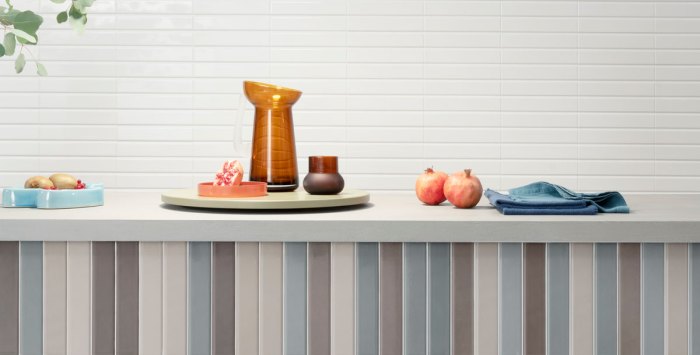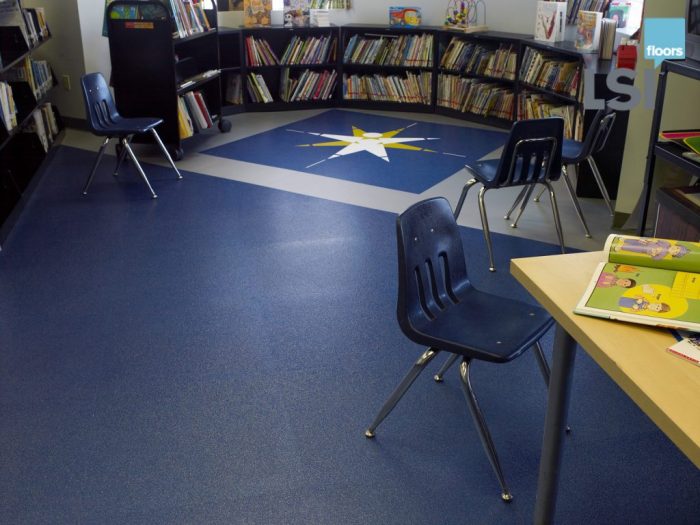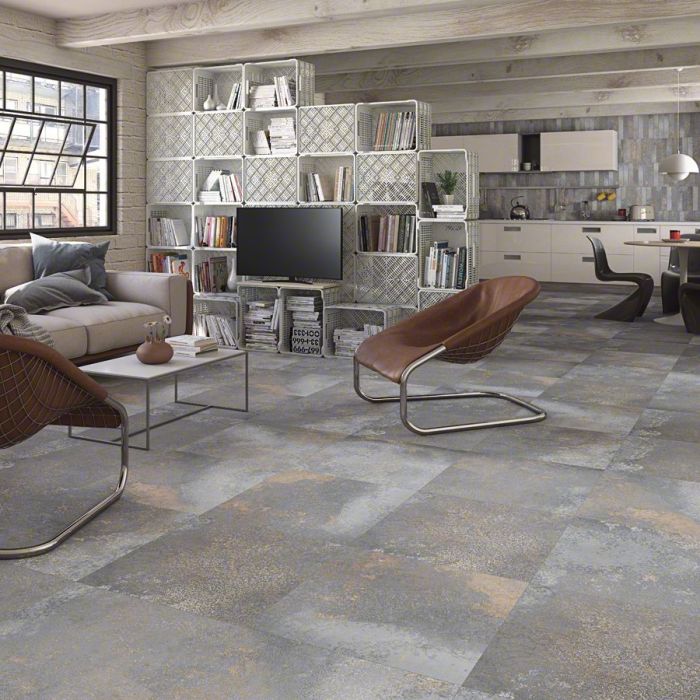In the realm of flooring, sustainability and style are no longer mutually exclusive. Environmentally friendly recycled tile flooring has emerged as a game-changer, offering a myriad of benefits that cater to both the planet and the discerning homeowner. From its positive environmental impact to its exceptional durability and aesthetic appeal, recycled tile flooring is poised to revolutionize the flooring industry.
This innovative flooring solution not only reduces waste and conserves natural resources but also boasts remarkable performance and design versatility. Whether you’re seeking a durable option for high-traffic areas or a unique touch to enhance your interior spaces, recycled tile flooring offers a compelling combination of sustainability, longevity, and style.
Environmental Impact
The utilization of recycled tile flooring offers significant environmental advantages. It reduces waste and conserves natural resources, contributing to a more sustainable built environment.
Recycled tile flooring is manufactured using post-industrial and post-consumer waste materials, diverting them from landfills and reducing the demand for raw materials. By utilizing recycled content, the production process consumes less energy and generates fewer greenhouse gas emissions compared to traditional tile manufacturing.
Waste Reduction
- According to the Environmental Protection Agency (EPA), the construction industry generates a substantial amount of waste, with tile contributing to a significant portion. Recycled tile flooring helps mitigate this issue by diverting discarded tiles from landfills.
- Case studies have demonstrated that using recycled tile flooring can reduce waste by up to 90%, significantly reducing the environmental impact of construction and renovation projects.
Resource Conservation
- The production of traditional tiles requires the extraction of natural resources, such as clay, sand, and minerals. Recycled tile flooring conserves these resources by utilizing waste materials.
- By reducing the demand for virgin materials, recycled tile flooring helps preserve ecosystems and protect biodiversity.
Design and Aesthetics
Recycled tile flooring offers a vast array of designs and styles, catering to diverse tastes and interior aesthetics. From classic patterns to contemporary motifs, these tiles provide unique visual appeal and add character to any space.
The inherent nature of recycled materials imparts a distinctive charm to these tiles. Slight variations in color, texture, and finish create a sense of authenticity and individuality. This aesthetic quality adds depth and interest to interior designs, making each installation a one-of-a-kind work of art.
Color and Pattern Variety
Recycled tile flooring comes in a wide spectrum of colors, ranging from earthy neutrals to vibrant hues. These colors can be combined and arranged in various patterns, such as mosaics, geometric designs, and random patterns, to create stunning visual effects.
The possibilities are endless, allowing for tailored designs that complement any décor.
Texture and Finish
The textures and finishes of recycled tile flooring vary depending on the materials used and the manufacturing process. Some tiles feature smooth and polished surfaces, while others have a more textured and rugged appearance. These variations in texture add tactile interest and can be used to create different ambiances, from elegant and sophisticated to rustic and industrial.
Applications in Interior Spaces
Recycled tile flooring enhances various interior spaces, including residential homes, commercial establishments, and public areas. In living rooms and bedrooms, these tiles create a cozy and inviting atmosphere. In kitchens and bathrooms, they provide a durable and stylish surface that can withstand moisture and wear.
In commercial settings, recycled tile flooring adds a touch of sophistication and durability to offices, retail stores, and hospitality venues.
Installation and Maintenance
Installing and maintaining recycled tile flooring is a relatively straightforward process that can be completed by experienced DIYers or professional installers. Here’s a step-by-step guide to help you achieve a durable and beautiful floor:
Installation
- Prepare the subfloor: Ensure the subfloor is level, smooth, and dry before installing the tiles. If necessary, use a leveling compound or self-leveling underlayment to create an even surface.
- Spread the adhesive: Using a notched trowel, apply a thin layer of adhesive to the subfloor. Follow the manufacturer’s instructions for the type of adhesive and trowel size.
- Lay the tiles: Starting from a corner, carefully place the tiles onto the adhesive, pressing down firmly to ensure good adhesion. Use spacers to maintain consistent spacing between the tiles.
- Grout the tiles: Once the tiles are set, apply grout to the joints between them. Use a grout float or sponge to work the grout into the joints, removing any excess.
- Seal the tiles: After the grout has cured, apply a sealant to protect the tiles from stains and moisture. Follow the manufacturer’s instructions for the type of sealant and application method.
Maintenance
Recycled tile flooring is generally low-maintenance and easy to clean. Here are some tips to keep your floor looking its best:
- Sweep or vacuum regularly: Remove loose dirt and debris from the floor to prevent scratches and wear.
- Mop with a pH-neutral cleaner: Use a mild, pH-neutral cleaner diluted with water to clean the floor. Avoid using harsh chemicals or abrasive cleaners, as they can damage the tiles.
- Avoid standing water: Clean up any spills or water droplets promptly to prevent staining or warping.
- Reseal periodically: To maintain the protective seal, reapply sealant according to the manufacturer’s recommendations, typically every 1-2 years.
Cost and Value
Recycled tile flooring offers a cost-effective and environmentally sustainable alternative to traditional flooring options. The initial investment may be slightly higher than non-recycled tiles, but the long-term savings and return on investment make it a worthwhile choice.
Recycled tile flooring is typically made from post-consumer or post-industrial materials, such as glass, ceramic, or porcelain. This reduces the need for raw materials and lowers production costs compared to traditional tiles.
Cost Comparison
The cost of recycled tile flooring varies depending on the type of material, size, and finish. However, it generally falls within the same range as non-recycled tiles of comparable quality.
While the upfront cost may be slightly higher, recycled tile flooring offers significant long-term savings. Its durability and low maintenance requirements reduce the need for repairs and replacements, leading to lower overall costs over the lifespan of the flooring.
Return on Investment
The return on investment (ROI) for recycled tile flooring is substantial. The initial investment in a high-quality recycled tile floor can add value to your property and increase its resale value.
Additionally, recycled tile flooring contributes to environmental sustainability, which can enhance your brand reputation and appeal to eco-conscious consumers.
Sustainability Certifications and Standards
Recycled tile flooring adheres to various sustainability certifications and standards, ensuring its environmental friendliness and responsible manufacturing practices.
These certifications validate the flooring’s recycled content, low environmental impact, and adherence to ethical guidelines.
Certifications and Standards
- GreenGuard Gold Certification: Ensures low chemical emissions, contributing to indoor air quality.
- FloorScore: Certifies low volatile organic compound (VOC) emissions, minimizing health risks.
- Cradle to Cradle: Assesses a product’s entire life cycle, promoting sustainability and circularity.
- LEED (Leadership in Energy and Environmental Design): Recognizes buildings that prioritize sustainable design and construction, including recycled tile flooring.
- ISO 14001: Sets environmental management standards for organizations, ensuring responsible production practices.
These certifications benefit consumers by providing assurance of the flooring’s environmental credentials and promoting transparency in the manufacturing process.
Examples of Certified Manufacturers
- Interface
- Shaw Industries
- Tarkett
- Mannington
- Armstrong Flooring
Closing Summary
As the demand for eco-conscious building materials continues to rise, recycled tile flooring stands as a beacon of sustainability and innovation. Its environmental benefits, coupled with its exceptional performance and aesthetic qualities, make it an ideal choice for homeowners and businesses alike.
By embracing recycled tile flooring, we not only contribute to a greener planet but also invest in a durable and stylish flooring solution that will endure for years to come.



